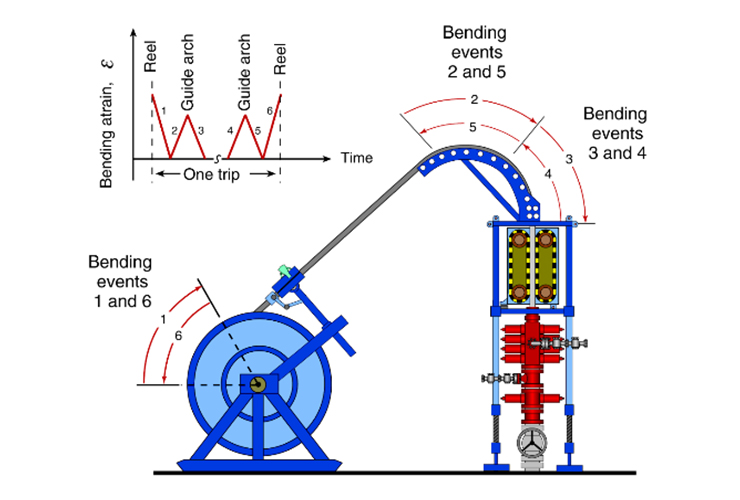Coiled Tubing: Repeated Bend Cycling
And Microcracks
Author: Marat Seitimov
Published: 17th July 2019


Comment
Your Email
Enter your comment here:
Enter Your Comment
Your Email
Comments
Fatigue life measurements appear to be a statistical phenomenon, which makes the measurement of the fatigue life of the Coiled Tubing (CT) string to be only an estimation. The fatigue condition of a segment of the tubing with a known bending history cannot be measured accurately with currently existing tools and nondestructively. You can also expect variations in the observed fatigue life for any tubing string, regardless of comparable bending history records..
Repeated bend cycling of CT string results in a reduction in material yield strength and has a terminology name of “cyclic softening”. When subjected to plastic deformation because of bend cycling with internal-pressure loading, the diameter of the CT tends to grow or “balloon”. As the diameter of the tubing grows, and since the cross-sectional area of the tube body is assumed to be constant, then the wall of the tube gets thinner due to the redistribution of the material. The primary factors that can cause diametral growth of the tubing string are tube outside diameter (OD), wall thickness and material properties, but also bend radius, and internal-pressure loading. However, CT growth measurements in the field are usually much less than the results obtained in lab testing. Primarily this is because of the factors such as tubing rotation, which causes the wall thinning to occur more uniformly.
One of the most common tubing failures result from microcracks. As the tubing undergoes a constant cycle during CT operations, eventually, it leads to the formation of microcracks in the tubing body and loss of pressure integrity. Detection of cracks can be extremely difficult - one of the reasons is that cracks start to form on the inner side of the tubing and appear to be very small. However, under high internal pressure, the crack may instantaneously propagate along the circumference of the tube, resulting in a major failure – mechanical separation of the tubing. When evaluating the tubing failures, these microcracks are amongst the most common causes of the CT string failure.
Coiled tubing string is an expensive consumable, so service companies try to get the most out of their investment. Maximizing the usage of the string must be in conjunction with minimizing fatigue failures. Most of the coiled tubing companies have their own fatigue life tolerances or limits upon which they decide to retire or cut the tubing. In general, the decision to retire the coiled tubing must consider current tube conditions, its service history, and the anticipated service loading. CT life management software constantly tracks the accumulated fatigue in each section of the CT string. A single job may use up to 80% of the CT fatigue life, therefore, the importance of keeping the string data up-to-date is crucial. What started as a drilling operation may end as a fishing job and may cost the operator significant amounts of time and money and may hurt the reputation of the service provider.
Image Source: Petrowiki.org












+44 1392 933 100 | +1 800-868-1562